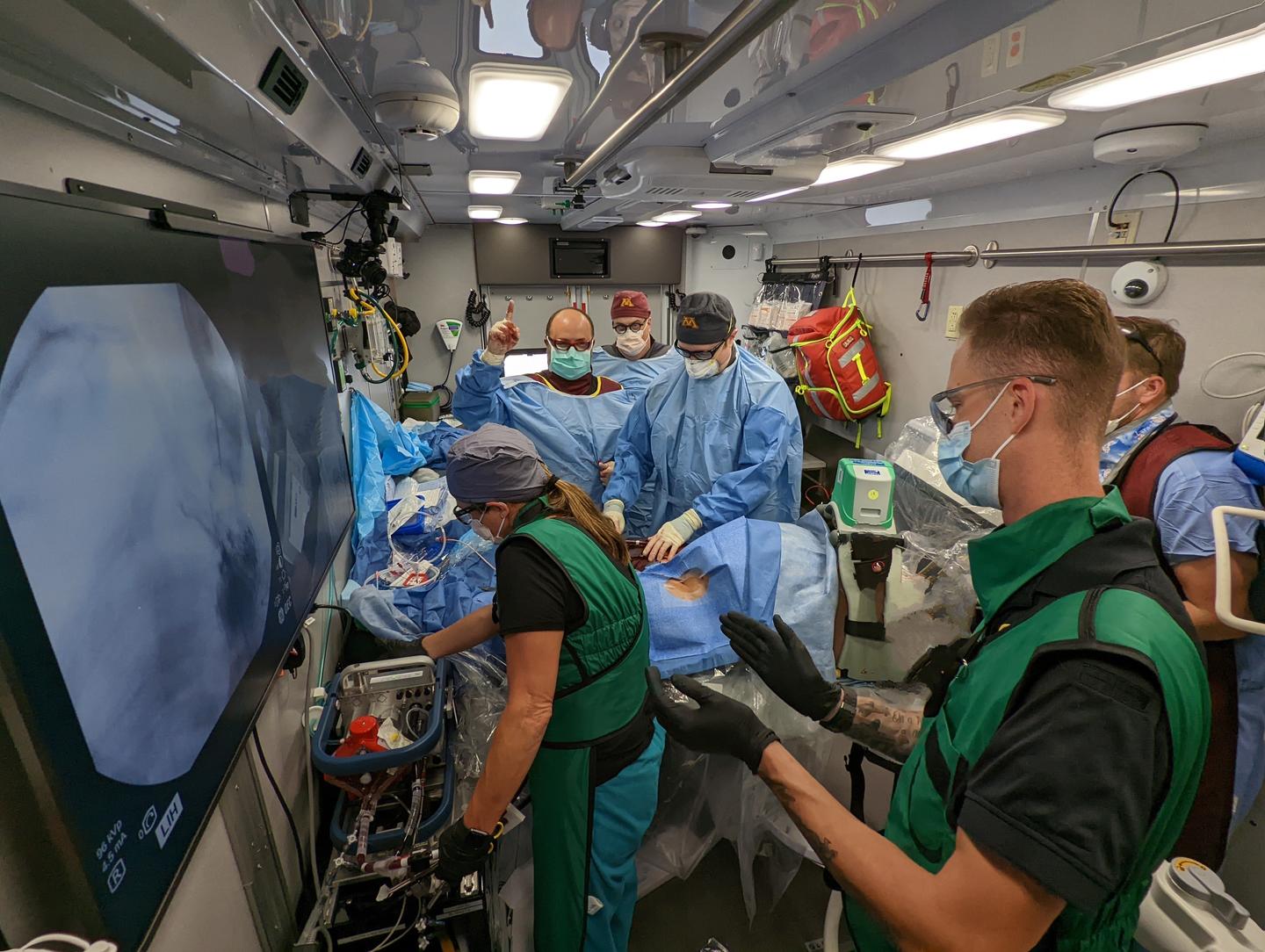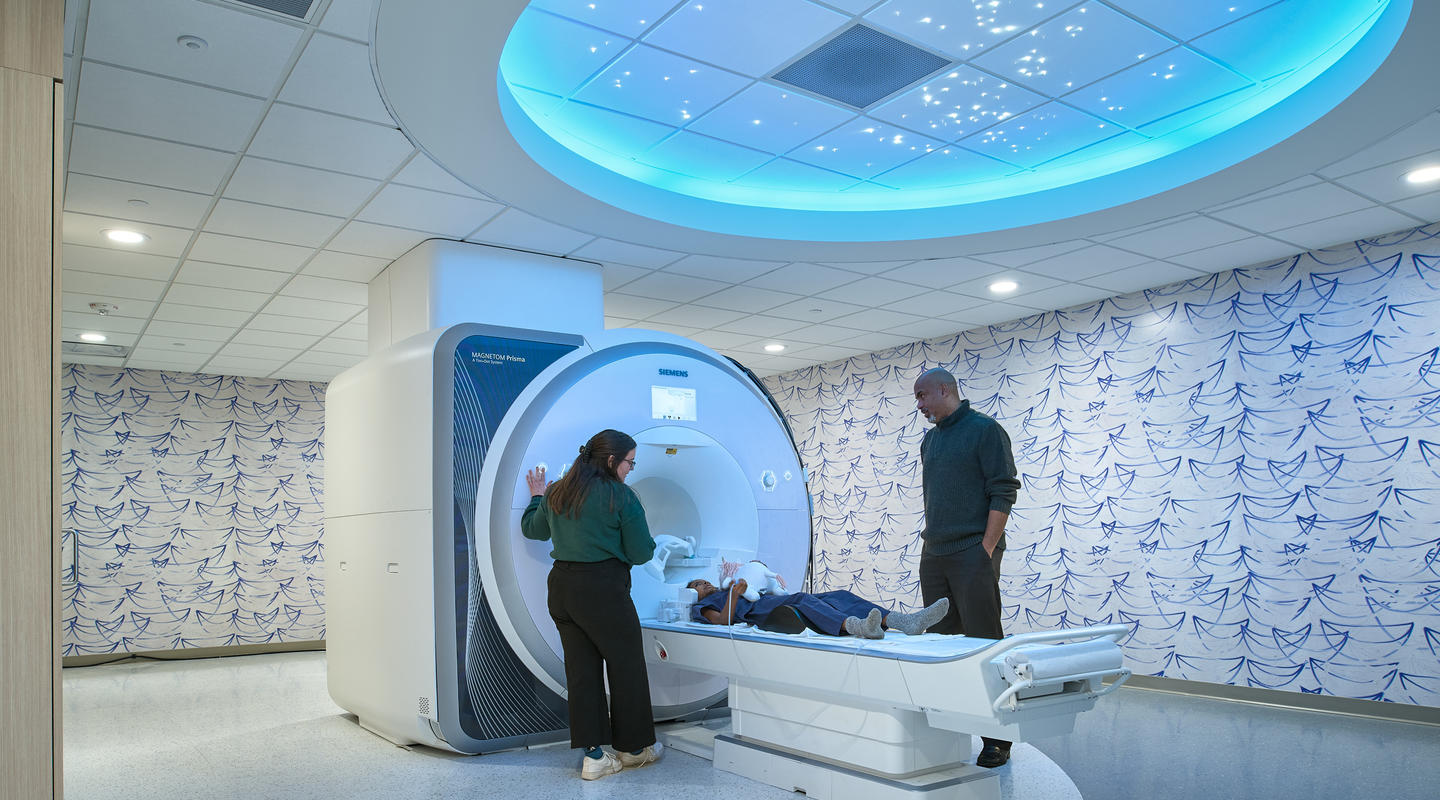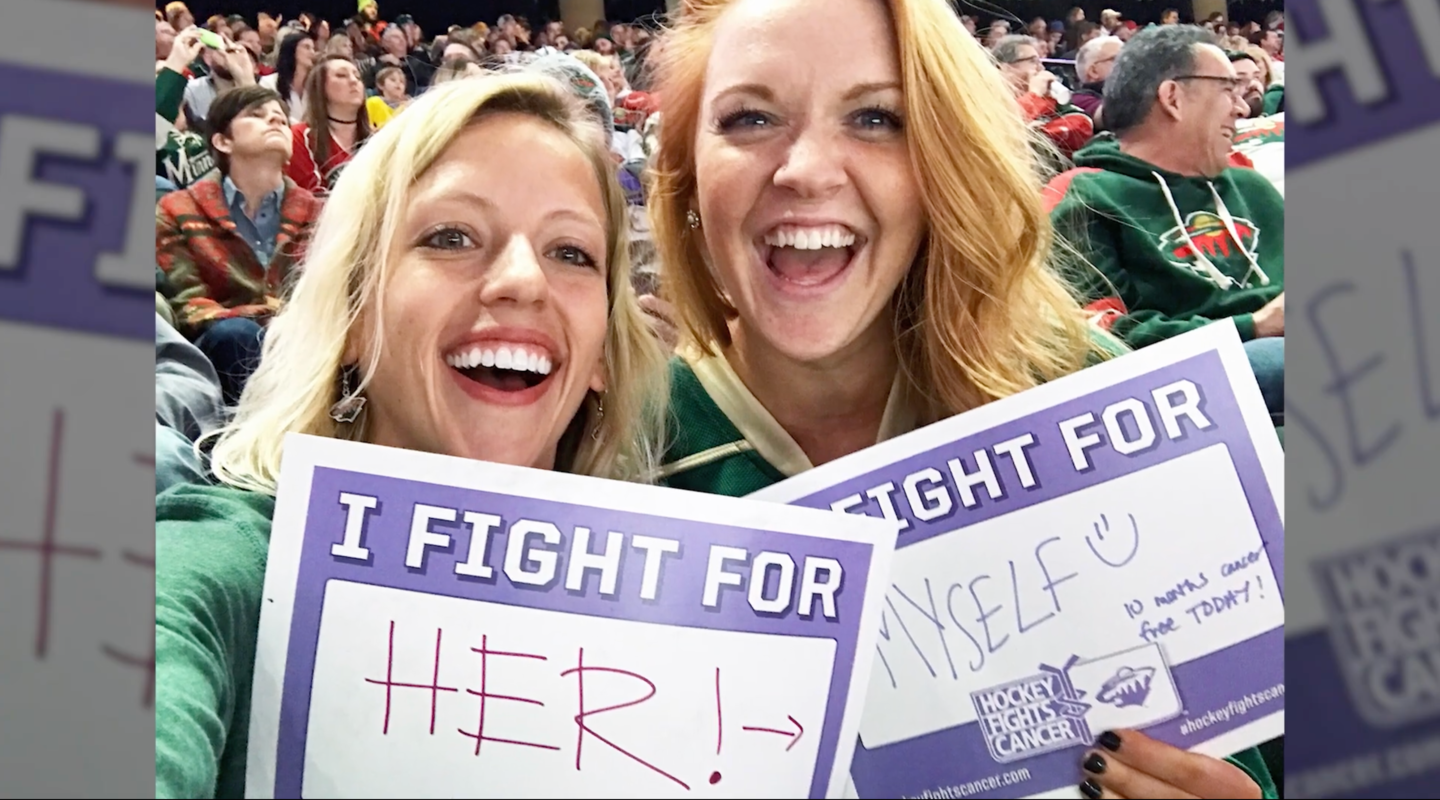
A care team, including Demetris Yannopoulos, MD, and Jason Bartos, MD, PhD, work inside the mobile ECMO truck. Photo courtesy of the Minnesota Mobile Resuscitation Consortium
On August 11, 2022, John Sauer and his wife, Kris Waters, had just wrapped up a leisurely three-mile hike around the scenic greenspace near their Chanhassen home. Sauer stayed outside to mow the lawn and then came indoors to cool down on the living room couch with a glass of water.
In less than a minute, his eyes became unfocused, and his breathing was labored. Then his heart stopped. The 61-year-old Sauer, who had no significant heart health concerns, was experiencing a sudden cardiac arrest, a condition that is fatal nine out of 10 times Sauer doesn’t remember what happened next, but Waters does. And so do the experts at the University of Minnesota’s Center for Resuscitation Medicine, whose innovative ideas to save more people suffering from cardiac arrest were about to be put to the test.
Without hesitation
Miles away from the nearest hospital, Waters, a registered nurse, asked her adult daughter, Lauren, who was also in the room, to call 911, and to help her drag Sauer’s sizable 6-foot-3 frame onto the floor so she could begin CPR, a vital first step in helping someone survive cardiac arrest.
First responders from Ridgeview EMS arrived quickly, taking over CPR duties. As the crew quickly whisked Sauer away into an ambulance bound for M Health Fairview Southdale Hospital, Waters noticed that her husband’s toenails had turned blue.
It was visual evidence of the grim reality that defines cardiac arrest, even if CPR has been performed, says Demetris Yannopoulos, MD, director of the U’s Center for Resuscitation Medicine and an M Health Fairview cardiologist.
“During cardiac arrest, the ability of CPR to maintain blood flow and oxygen delivery to organs is quite limited,” he says. “Especially after 35 minutes of CPR, the chances of surviving are almost zero.”
Lifesaving technology
Yannopoulos and Center for Resuscitation Medicine co-director, Jason Bartos, MD, PhD, have made it their mission to turn the tables on cardiac arrest. The linchpin of their plan is extracorporeal membrane oxygenation (ECMO).
ECMO, which is normally used for severely ill or injured patients in the hospital, takes over the duties of a person’s heart and lungs by pumping blood out of their body through a garden hose–sized tube and into an oxygenator, before returning that oxygen-enriched blood back to the patient. This allows the patient’s organs, especially their brain, to function normally, while buying time for doctors to treat them.
Since Yannopoulos founded the Center for Resuscitation Medicine in late 2014, the University of Minnesota has become a global leader in using ECMO as a bridge to survival for people experiencing cardiac arrest. He estimates that he and his colleagues at the University and M Health Fairview have used ECMO in more than 1,000 instances of cardiac arrest since the program’s inception—and significantly boosted survival rates.
A problem remained, however. Many hospitals aren’t equipped with ECMO technology. And most cardiac arrests happen far away from hospitals that are.
“When we looked at our data from the patients that we had taken care of, we saw that if people got to us within 30 minutes, we had nearly 100 percent survival rates,” Bartos says. “But every 10 minutes after that, that rate went down by 25 percent. With cardiac arrest, not just every minute counts, every second counts.”
With support from the Leona M. and Harry B. Helmsley Charitable Trust, Yannopoulos, Bartos, and their collaborators launched the Minnesota Mobile Resuscitation Consortium (MMRC) and devised a plan to put ECMO on the road. They created a first-of-its-kind ECMO vehicle, a fire truck–sized, emergency-room-on-wheels equipped with ECMO technology that can meet cardiac arrest patients in the field.
On August 11, that big maroon-and-white truck saved Sauer’s life.
‘So, so lucky’
Yannopoulos, Bartos, and the rest of the ECMO truck’s five-person care team met the ambulance carrying Sauer at Southdale Hospital’s emergency department vehicle bay. They transferred Sauer to the truck and began the complex procedure of connecting Sauer to the onboard ECMO machine.
“The truck is essentially a mobile version of a cardiac catheterization lab,” Bartos explains. “It has all the tools we would need to be able to put somebody on ECMO and even do some initial diagnostic testing—all those things that are traditionally done only in a hospital, but now they’re on wheels.”
Once Sauer was successfully hooked up to ECMO, the truck took him to M Health Fairview University of Minnesota Medical Center. Sauer regained consciousness five days later and left the hospital 12 days after his cardiac arrest.
“I can never pay that back, can never thank enough, there’s just no way,” says Sauer in gratitude to his care team. “So many people had to do their jobs perfectly for me to be here. I know that. This doesn’t happen all the time, and I’m so lucky. So, so lucky.”
Support cardiovascular resuscitation research at the University of Minnesota.


